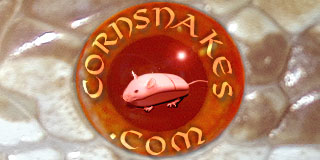How to perform non-destructive testing on the internal structure of the air valve body?-Zhuhai Kuijie Environmentai Protection Techology Co.,Ltd
1. Radiographic detection method
Radiographic detection is a commonly used method for non-destructive detection of the internal structure of the air valve body. It uses X-rays or gamma rays to penetrate the valve body. Due to the different absorption of radiation by different structures and materials inside the valve body, different grayscale images will be formed on the film or detector. For casting defects inside the air valve body, such as pores and shrinkage cavities, radiographic detection can clearly present them. During the detection process, the energy of the radiation source should be reasonably selected according to the material and thickness of the air valve body to ensure that radiation with sufficient penetration and resolution can be obtained. At the same time, in order to accurately detect, the detection angle and position need to be carefully planned, because some complex structures of the air valve body may have radiation shadow areas, which affect the integrity of the detection results. By analyzing the radiographic images, it is possible to determine whether there are defects in the internal structure of the air valve body, thereby evaluating its quality.
2. Ultrasonic detection method
Ultrasonic detection is also important in the detection of the internal structure of the air valve body. When ultrasonic waves propagate inside the air valve body, they will reflect, refract and scatter when they encounter the interface of different media (such as cracks and inclusions inside the valve body). By placing an ultrasonic probe on the surface of the valve body, transmitting and receiving ultrasonic signals, and analyzing the time, amplitude, and waveform characteristics of the reflected wave, the condition of the internal structure of the air valve body can be determined. This method is particularly effective for detecting tiny cracks inside the air valve body. However, ultrasonic testing requires high operating skills and experience of the inspector, because the propagation characteristics of ultrasonic waves are affected by many factors, such as the grain structure and surface roughness of the valve body material. Before testing, the surface of the air valve body needs to be well pretreated to ensure the effective propagation of ultrasonic waves.
3. Industrial endoscope detection method
The industrial endoscope is a non-destructive testing tool for directly observing the internal structure of the air valve body. It transmits the internal image to the external display screen by inserting a slender endoscope with an optical lens or camera into the opening or channel of the air valve body. This method can clearly see the surface condition of the air valve body, such as corrosion, wear, foreign matter, etc. For some complex air valve bodies, the endoscope can pass through the curved pipe and enter the area that is difficult to observe directly. When using the industrial endoscope for detection, pay attention to the insertion depth and angle of the endoscope to ensure that the area to be inspected can be fully covered. At the same time, the resolution and lighting conditions of the endoscope will also affect the detection effect. It is necessary to select a suitable endoscope device according to the specific situation of the Air valve body.
4. Magnetic particle testing and penetration testing (applicable to ferromagnetic material Air valve body)
For Air valve bodies made of ferromagnetic materials, magnetic particle testing and penetration testing are effective non-destructive testing methods. Magnetic particle testing is to spray magnetic powder on the surface of the valve body after the Air valve body is magnetized. If there are defects such as cracks inside the valve body, the magnetic lines of force will leak at the defect and adsorb the magnetic powder, thereby showing the location and shape of the defect. Penetration testing uses the capillary action of the penetrant to make the penetrant penetrate into the surface defects inside the Air valve body, and then display the defects through the developer. Both methods are very effective for detecting defects on the surface or near the surface of the Air valve body, but both require the surface of the valve body to be cleaned and pre-treated to ensure the accuracy of the detection. Their limitations are that they can only detect surface or near-surface defects, and cannot detect defects deep inside the valve body.
read more..
Search for How to perform non-destructive testing on the internal structure of the air valve body?-Zhuhai Kuijie Environmentai Protection Techology Co.,Ltd in the web..




